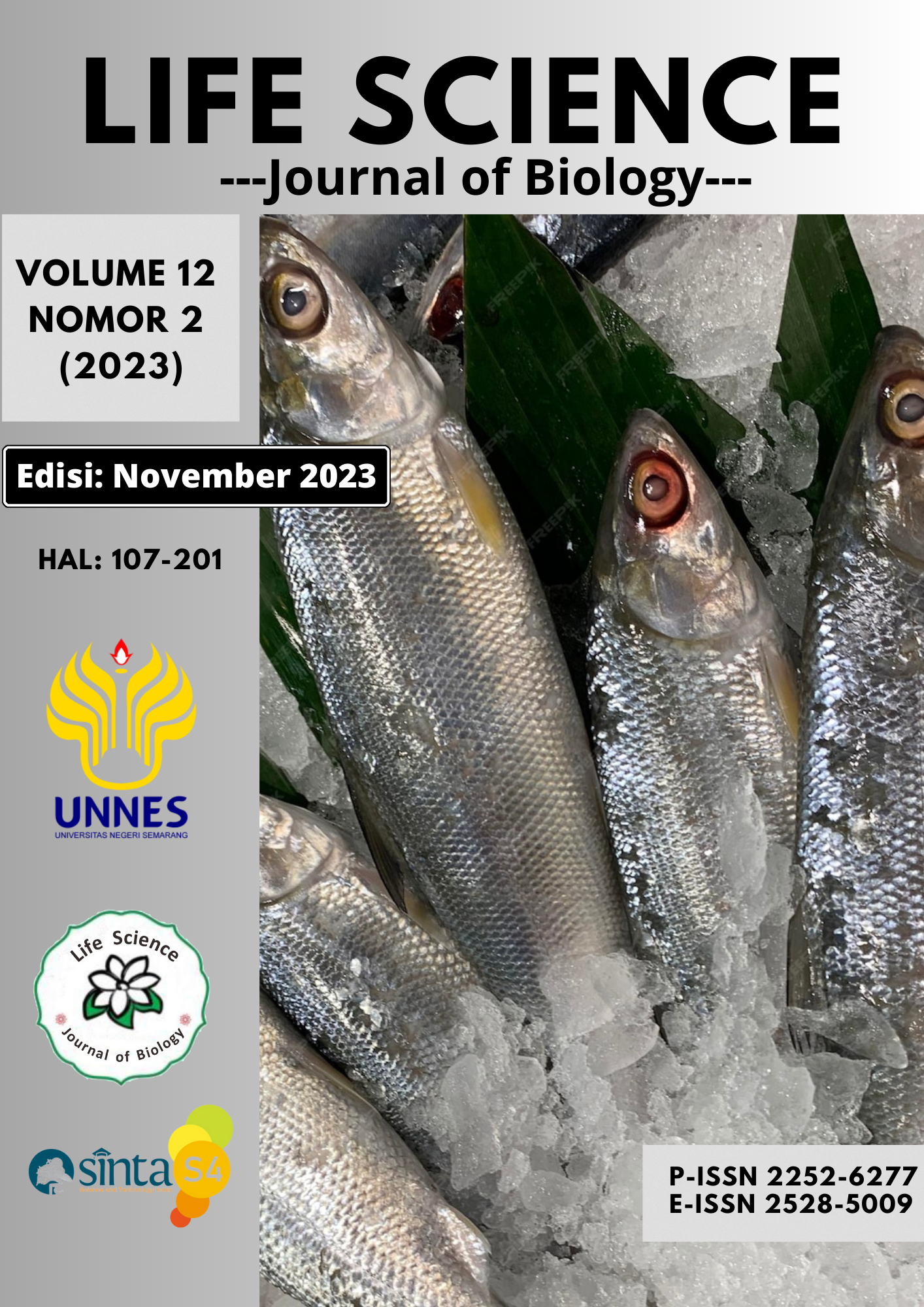Analisis Perbandingan Kadar Hemoglobin, Jumlah dan Struktur Eritrosit pada Lima Kelas Vertebrata
Main Article Content
Abstract
The size, shape of cells, number of erythrocytes and hemoglobin content between each class of animal can be different. This study aims to examine the comparison of hemoglobin levels, number and structure of erythrocytes in five classes of vertebrates. The animal blood used in this study consisted of five species representing each class, namely Clarias batrachus representing the pisces, Bufo sp. represents the amphibian, Varanus salvator represents the reptile, Columba livia represents the aves, and Mus musculus represents the mammal. Hemoglobin levels were tested using the Sahli method, while the number and structure of erythrocytes used a hemocytometer and Neubauer counting chamber which were observed under a microscope with a magnification of 40x10. The results showed that hemoglobin levels in Clarias batrachus, Bufo sp., Varanus salvator, Columba livia, and Mus musculus were 3.8 g/dl, 6.8 g/dl, 10.4 g/dl, 10 .8 g/dl, and 8.2 g./dl. The number of erythrocytes was 780,000/mm3, 320,000/mm3, 1,900,000/mm3, 3,270,000/mm3, and 3,960,000/mm3, respectively. In terms of erythrocyte structure, it was found that Clarias batrachus has a round structure with a nucleus, Bufo sp., Varanus salvator, and Columba livia have an oval shape with a nucleus, while Mus musculus has a biconcave disc shape without a nucleus. The conclusion of this study shows that the highest hemoglobin levels are found in Columba livia and the lowest in Clarias batrachus. The highest number of erythrocytes was found in Mus musculus, and the lowest in Bufo sp. All erythrocytes in the vertebrate class have a nucleus, except in mammals


